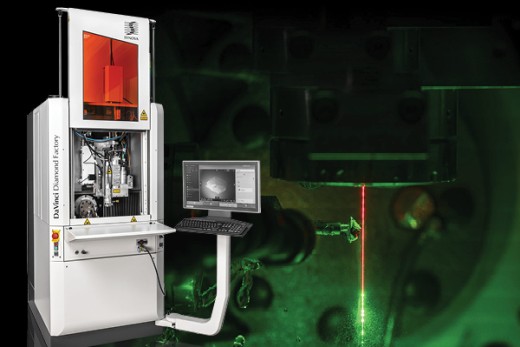
On the supply side, 15 countries on the African continent now provide 50% of global diamonds. The five largest African mining countries (Angola, Botswana, Namibia, South Africa and Zimbabwe) recover over 35 million carats of diamonds from their mines.
Nevertheless, most of the rough diamonds from African mines are either sold in auctions or through supply contracts with miners. Until now almost 90% of the rough stones traded are cut and polished in Surat, India. The finished gems pass through traders in Antwerp, Belgium or in Dubai who supply them to the retail market. Thus, the average gem travels around the globe before it reaches the customer.
This inefficient distribution system is about to change. In a bid to increase their share of the value chain, African mining countries have placed restrictions on the export of large carat stones. They are also investing in diamond polishing facilities to export gems instead of stones.
The major challenge facing these countries is that the traditional way of cutting and polishing diamonds requires specific manual skills.
In a conventional process, there are five steps for finishing a diamond: sorting the rough, planning for manufacturing, sawing the rough into a preliminary shape, shaping the girdle and polishing the facets. Each step is carried out in a separate production facility. It takes an average of a fortnight to convert a stone into a polished gem, but with all the middlemen, transport and customs, the entire process can take up to 6 months.
Once the rounded shape of the rough is formed (bruting), the most difficult operation is to form the facets of the diamond. The polisher places the rough on a rotating arm called tang and uses a spinning wheel to create reflective facets on the diamond. In the first operation, the polisher cuts eighteen facets. In the second operation, the remaining facets are added, bringing the total to 57 facets. The brilliance of the diamond is determined at this stage.
A well-cut diamond reflects and refracts light. These optics are due to careful polishing. The symmetry and proportions must be right to direct the maximum amount of light. The beauty of modern diamonds is thanks to the perfection of the diamond polisher’s art.
To replace the need for such polishing skills, mining countries are relying on technology. The new generation machines use lasers and 5-axis-CNC technology to replace the skilled labour needed for cutting and polishing diamond stones.
The only fully automated laser solution is Synova’s DaVinci Diamond Factory®. This laser machine combines three operations: cutting, bruting and faceting.
For the first operation of cutting the stone (sawing), the DaVinci machine saws the stone along a marking to provide a flat table surface for the shaping operation.
In the next operation, the stone is glued on a specific patented holder (with the help of a setting station that is part of the DaVinci system). The system is equipped to import third party software used for scanning the stone and planning for optimized use. After carrying out an optical alignment to establish a centre point in the cut stone, it first shapes the facets on the pavilion. This is where the laser beam can cut off large diamond chips that can be used for smaller gems, a huge advantage of laser shaping compared to mechanical shaping. Thereafter, it cuts the upper girdle facets and all crown facets. A round diamond has 57 facets.
Finally, the spindle rotates ninety degrees so that the laser beam does the girdle bruting. Unlike in the manual procedure, bruting (girdle cutting) can be performed as last operation.
A short manual polishing operation is needed to remove the carbon layer, generated by the laser ablation, as well as to smoothen the surface of the facets.
The mere concept of converting a raw diamond into a finished gem in a matter of hours, instead of weeks, is mind boggling.
The Synova DaVinci Diamond Factory system, installed in factories in South-Africa and soon in Botswana, offers two key major advantages. For one, there is no need for manual polishing skills on a larger scale. For another, by combining several workflows in one machine, the production time is strongly reduced.
Furthermore, by linking the system to planning hardware, it is possible to convert a raw stone into a polished gem in a single production process. In such a scenario, the raw diamond will be mapped, planned and polished in a production line with a throughput time of a few hours.
There can be further automation. In the inspection phase, artificial Intelligence can be used to assist inspectors for diamond grading.
This new technology has immense potential. It will change the way that diamonds are ordered and distributed. It will be possible to manufacture individual gems according to on-line customer orders.
Digitalization and artificial intelligence are changing the economics of the diamond industry. Those who are slow to adapt to these new technology disrupters risk missing out on the next economic boom.
synova.ch
|
|
|
|
|